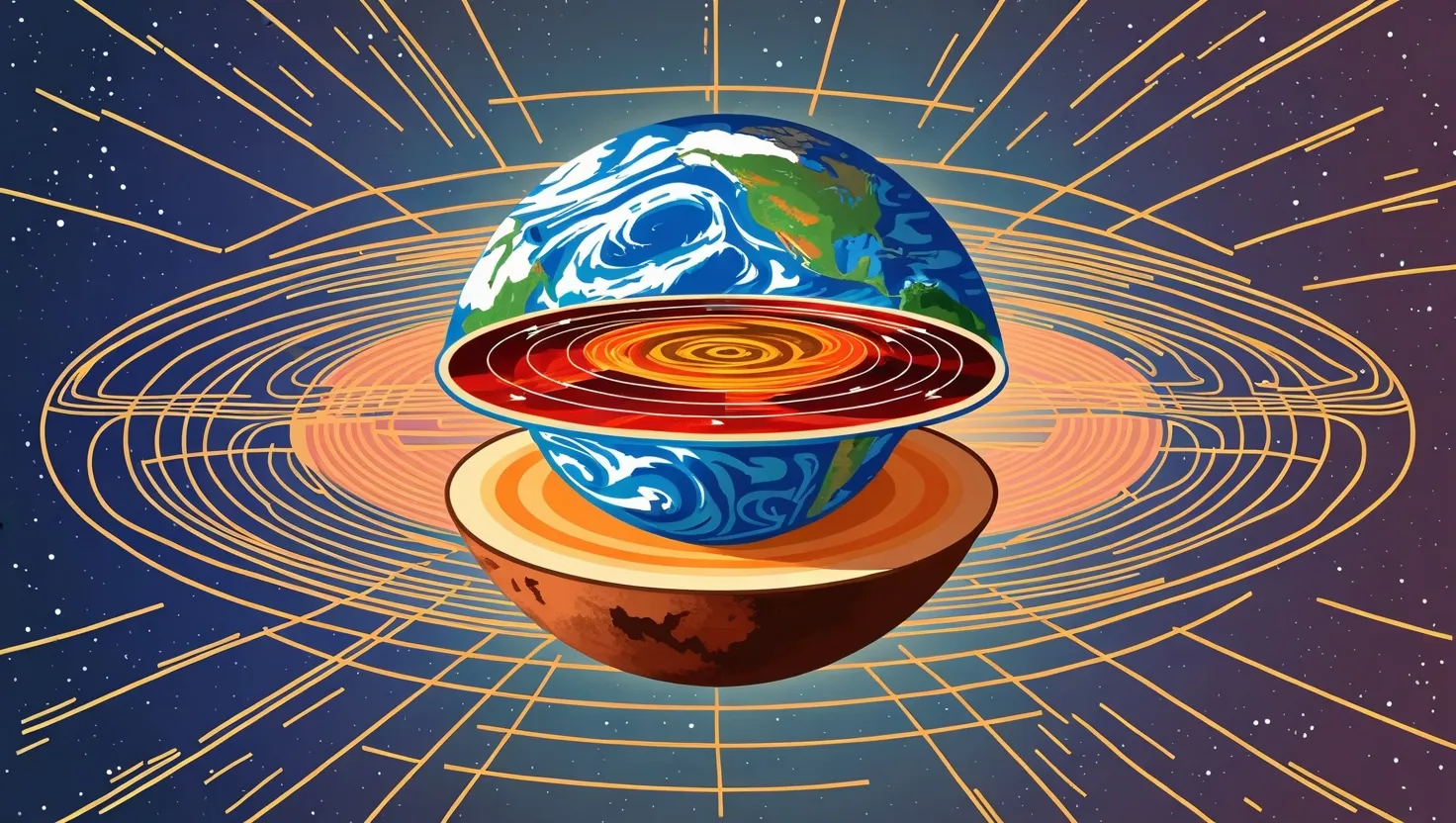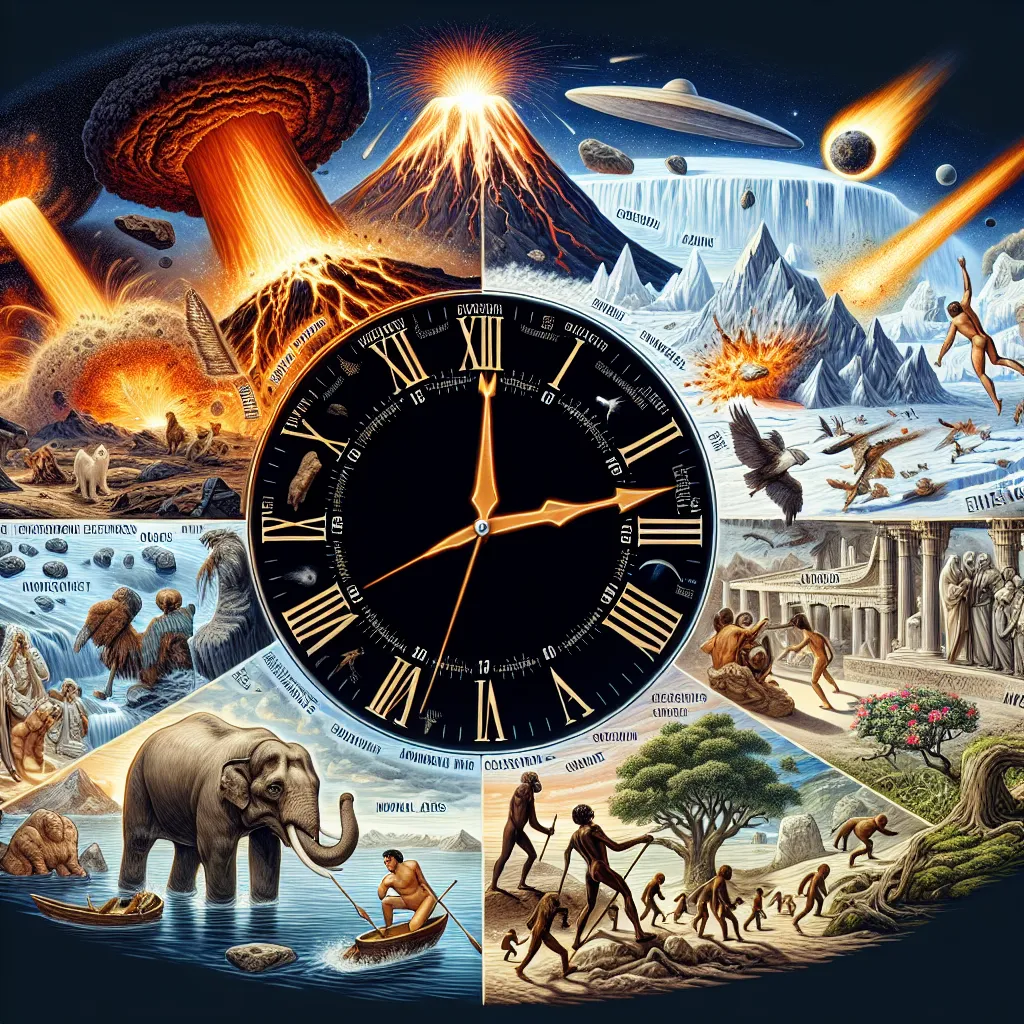Peering into the center of our planet feels almost like an act of imagination. Think about it: we’ve never drilled more than a fraction of the way through the Earth’s crust, yet the story of the core holds some of the boldest scientific mysteries. When I read about our planet’s innermost regions, I often pause to wonder—what keeps us so curious about a place no one will ever visit? Some of the answers are grounded in life-and-death importance: the core influences everything from navigation systems to the survival of most living things on Earth. But many questions about it still puzzle geologists, physicists, and daydreamers alike.
Let’s start at the very heart: the inner core’s rotation. If I asked you how fast the Earth spins, you might imagine one solid mass turning as one. But seismic observations have laid out a strange story—the solid inner ball of iron doesn’t always match the rotation of the rest of the planet. Some years it overtakes us, some years it lags behind. Imagine a runner inside a spinning wheel, sometimes pushing ahead, sometimes being pulled back. And this isn’t just a quirky detail. The way the inner core rotates might affect the length of days and even long-term climate trends. But how is it possible for a chunk buried beneath over 1,800 miles of rock to do its own thing? No one can say for sure. Some suggest it’s the complicated flow of liquid iron around it that occasionally gives the core a nudge. Others believe gravity or magnetic tugs are involved. The only constant here is debate. Have you ever considered what it would feel like if the center of your home spun independently of its living room?
“The important thing is not to stop questioning. Curiosity has its own reason for existence.” —Albert Einstein
Now, think about your compass. It points north not because there’s a static bar magnet under our shoes, but because under our feet, the molten iron of the outer core churns relentlessly. The process is called the geodynamo. Simple? Not quite. Scientists widely agree that these swirling movements make the geomagnetic field possible. But mapping the details—the exact spiral paths and the energy that keeps them in motion over billions of years—remains a puzzle that models have yet to solve. Even stranger, this field has reversed hundreds of times through history: north and south flip, sometimes over thousands of years, sometimes much more quickly. Why does this happen? What pattern lies beneath the chaos? I sometimes find myself picturing iron rivers within the core, shifting and flipping like cosmic weather patterns. With every new computer simulation, we learn more, but the heart of the geodynamo still beats beyond our grasp. Does this uncertainty make you rethink the steady guidance of a compass needle?
“Science is a way of thinking much more than it is a body of knowledge.” —Carl Sagan
Beneath the mysteries of movement lies another riddle: the composition anomaly. The core isn’t just a simple ball of iron and nickel—the seismic waves we rely on for clues tell us they travel too slow in certain regions, suggesting the brew is lighter than pure iron should be. What’s making it this way? Carbon, silicon, oxygen, sulfur—all are potential suspects, but identifying the real culprit is more than a trivia pursuit. Did these elements join the core during Earth’s birth, swirling down in the planetary cauldron, or did they seep in from above over eons? The answer could rewrite our understanding of how the early Earth formed and cooled, and maybe even how it gained the magnetic shell that shields us from cosmic radiation. Why does it matter? The mixture determines how heat and energy move through the core, influencing everything from volcanic eruptions to tectonic drift. Picture a recipe where missing an ingredient changes the entire flavor of the dish… except the “dish” is the entire planet.
“Look deep into nature, and then you will understand everything better.” —Albert Einstein
Another question that keeps scientists up at night is the age of the inner core. Did it solidify quickly after Earth’s formation, or only recently, on the scale of billions of years? Some estimates argue it emerged a billion years ago; others stretch further back in time. Why is this so important? The moment the inner core formed coincides with a jump in the planet’s ability to generate a powerful magnetic field. Before that turning point, life on Earth faced harsher solar bombardment. Knowing the timeline could tell us when Earth became truly habitable, and how the planet’s geologic engine kept life safe enough to thrive. But despite the fact that hundreds of millions of years matter for timing the “dawn” of the inner core, every method for measuring them comes laced with uncertainty. Is it surprising how time can stretch and compress so strangely at these brutal pressures and temperatures?
“The most beautiful thing we can experience is the mysterious. It is the source of all true art and science.” —Albert Einstein
Then there’s the strange terrain where the core and mantle meet. You might imagine our planet as a series of perfectly layered shells, but the truth is messier. The boundary is anything but smooth. Instead, there are immense blobs of super-dense material resting against the edge, hundreds of miles wide and taller than Everest. No one’s exactly sure what these “mountains of the deep” are made of or how they formed. Here’s where things get weird—these structures seem to change, sometimes over human timescales, as seen by satellites measuring gravity. Some scientists think they play a hidden role in shaping volcanic hotspots on the surface, influencing eruptions thousands of miles above. Imagine an invisible hand inside the planet, guiding where volcanoes will someday burst forth, steering the lifeblood of continents. How many surface phenomena have their real roots buried more than a thousand miles down?
“Not only is the Universe stranger than we think, it is stranger than we can think.” —Werner Heisenberg
Think for a moment about how all of this came to light. Nearly every fact we believe about the core—its temperature, density, composition—comes from waves that rattle through the entire Earth during earthquakes. Human curiosity piggybacks on these tremors, catching whispers from the planet’s deepest places without ever lifting a shovel. Early pioneers like Inge Lehmann dared to argue—against all odds and plenty of skeptics—that seismic echoes were not behaving as they should, leading to the discovery of the inner core in the 1930s. Every leap forward owes much to those who trusted the faintest of signals and built complex arguments from invisible data. How different might our understanding be if these waves bounced and bent just a little differently?
“In questions of science, the authority of a thousand is not worth the humble reasoning of a single individual.” —Galileo Galilei
What surprises me most is how these riddles, rooted miles beneath us, somehow touch life at the surface. The differential spin of the inner core could affect the length of our days, inching or shrinking them before we ever notice. The arching magnetic field that protects us from solar storms flickers and maybe even disappears now and then, exposing biology to new stresses, forcing evolution’s hand. The hidden mountains at the core’s edge may set the stage for continents to move, for mountain ranges to rise, or for volcanoes to suddenly awaken after eons of rest.
All these mysteries remind me that the planet’s core isn’t just a boundary we hit going downward—it’s a generator, a time capsule, a force that shapes what it means to live on Earth. We’re still far from answering the essential questions. Does the inner core always spin within us, or can it sometimes pause or reverse? What’s in the core’s recipe book, and how did it come to be? Why did the solid heart arrive when it did, and how does it keep our world safe? What secrets wait in those buried mountains at the edge of fire and rock?
As I think about it, maybe the greatest lesson from the Earth’s core isn’t rooted in any one answer. It’s the reminder that even with our technology, ingenuity, and persistence, some parts of nature push back. And so the questions keep spinning—just like the world itself.
“Somewhere, something incredible is waiting to be known.” —Carl Sagan






